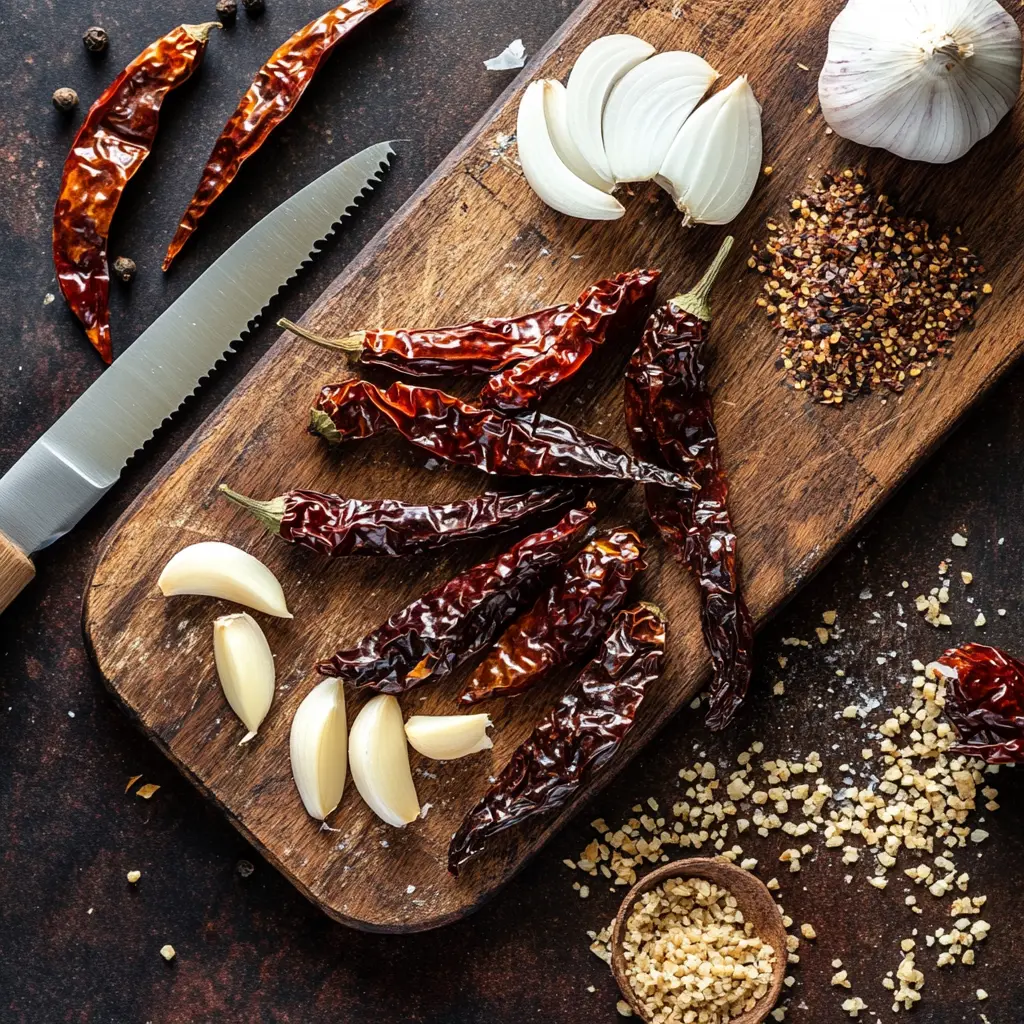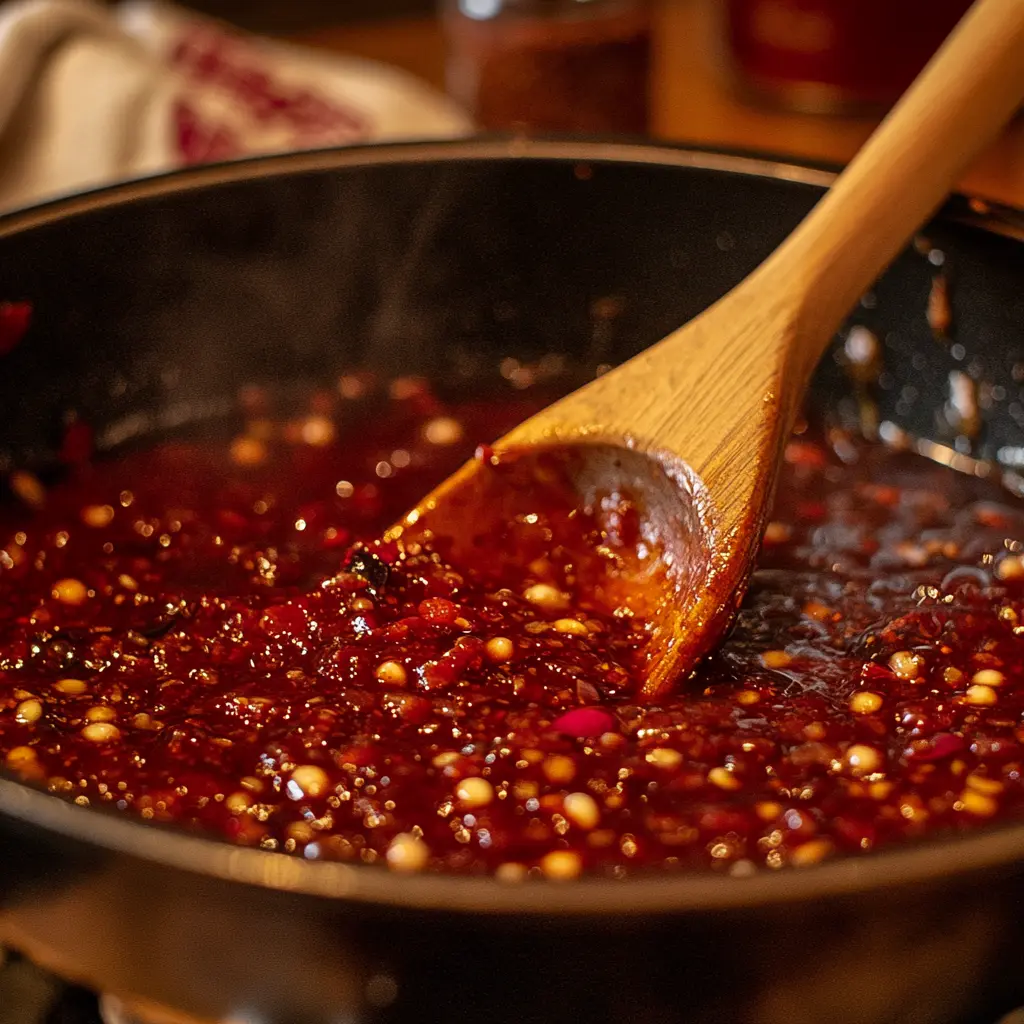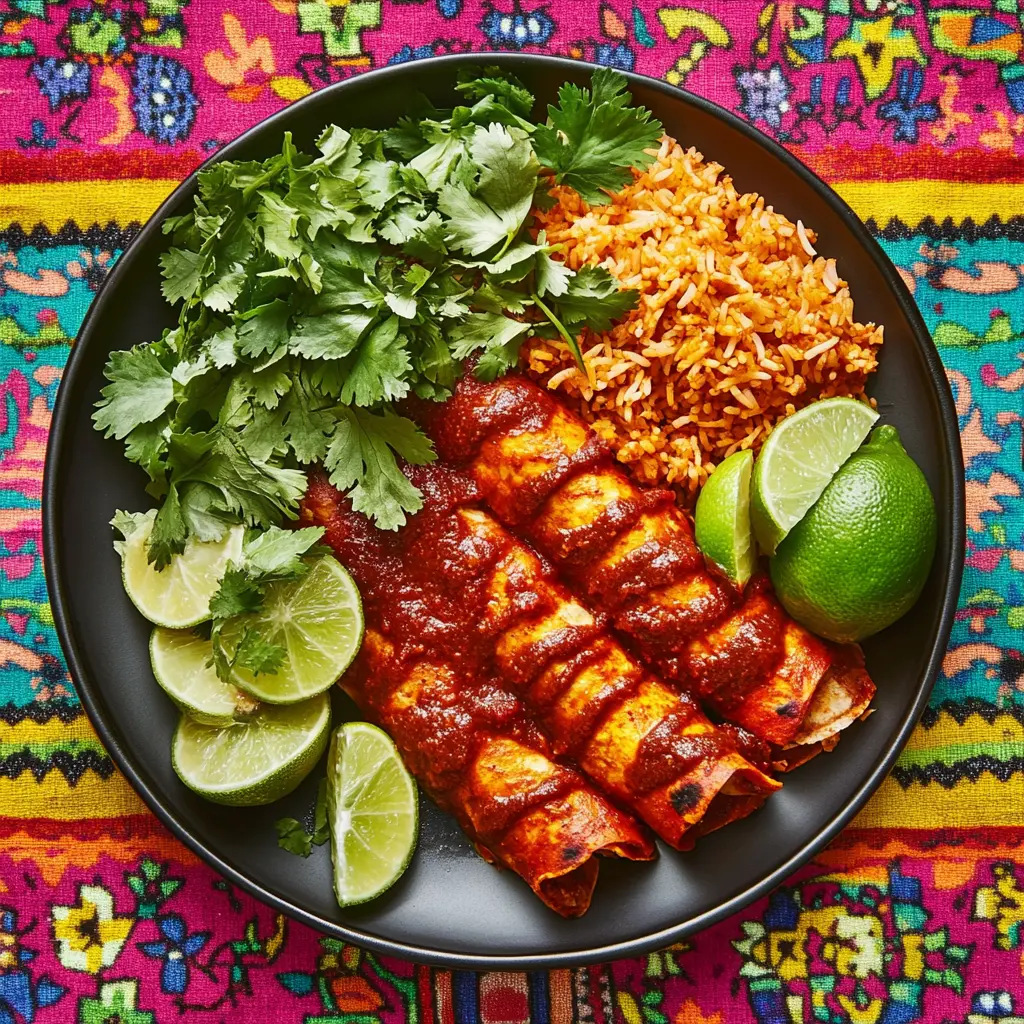Guajillo sauce is a cornerstone of Mexican cuisine, celebrated for its smoky, sweet, and tangy flavors. Made from the dried guajillo pepper, this versatile sauce is a key ingredient in traditional dishes like enchiladas, tamales, and pozole. Its rich, vibrant taste enhances a variety of meals, making it an essential addition to every kitchen.
Originating from the heart of Mexico, guajillo sauce has become a global favorite for its adaptability and distinctive flavor profile. Whether drizzled over tacos or used as a marinade for grilled meats, its uses are as diverse as its taste. With the growing interest in authentic Mexican cooking, guajillo sauce stands out as a must-know recipe for home cooks and chefs alike.
In this article, we’ll dive deep into guajillo sauce—exploring its history, ingredients, preparation techniques, and many culinary applications. By the end, you’ll not only understand its significance but also feel confident in making and using it to elevate your dishes.
1. Understanding Guajillo Peppers
1.1 Origin and History
The guajillo pepper, derived from the Mirasol chili, holds an important place in Mexican culture and cuisine. These peppers have been cultivated for centuries, used not only for their unique flavor but also for their medicinal properties. Indigenous communities relied on guajillo peppers for their antioxidant and anti-inflammatory benefits, long before they became a staple in Mexican kitchens.
Guajillo peppers are primarily grown in the northern and central regions of Mexico, where the climate is ideal for drying and preserving chiles. Their name, “guajillo,” translates to “little gourd” in Spanish, referring to their smooth, leathery skin. Over time, these peppers became a defining ingredient in regional dishes, from Michoacán to Oaxaca, and are now recognized worldwide for their distinctive taste.
1.2 Characteristics
Guajillo peppers are easily recognizable by their deep reddish-brown color and smooth, shiny surface. They are medium-sized, typically measuring 4–6 inches in length, with a tapered shape.
Their flavor profile is what sets them apart:
Tanginess: A hint of acidity balances the flavor.
Sweetness: Notes of cranberry and subtle sweetness make them unique.
Smokiness: A mild smoky aroma adds depth to dishes.
Heat Level
Guajillo peppers have a mild-to-medium heat level, measuring between 2,500 and 5,000 on the Scoville scale. This makes them an excellent choice for adding warmth without overpowering the dish. Compared to other peppers, guajillo is milder than jalapeño but more flavorful than ancho.
Would you like me to continue expanding the remaining sections in detail? I can go deeper into ingredients, preparation, and culinary uses while keeping the writing engaging and informative. 😊
Here’s the detailed continuation of the article:
2. Ingredients of Guajillo Sauce
2.1 Primary Components
The beauty of guajillo sauce lies in its simplicity, yet each ingredient plays a vital role in creating its distinctive taste. Here’s a closer look at the primary components:

Alt Text: Dried guajillo peppers on a wooden board with garlic and onion, ready for cooking.
- Dried guajillo peppers: The heart of the sauce, these peppers provide the characteristic smoky, fruity flavor. Select high-quality peppers with a vibrant red-brown color and a pliable texture.
- Garlic: This aromatic adds depth and complexity to the sauce. Roasting garlic before blending enhances its sweetness.
- Onion: White or yellow onions are ideal for their mild sweetness, which balances the tanginess of the sauce.
- Cumin: A traditional Mexican spice, cumin adds warmth and an earthy undertone.
- Salt: Enhances the overall flavor and ties the ingredients together.
- Water or broth: Adjusts the sauce’s consistency and intensifies flavor, especially if using chicken or vegetable broth.
2.2 Optional Additions
While the basic ingredients are enough to create a flavorful guajillo sauce, you can customize it with these optional additions:
- Tomatoes or tomatillos: Provide a richer base and add tanginess.
- Other dried chiles: Add chile de árbol for heat or ancho peppers for a smokier flavor.
- Herbs: Mexican oregano or cilantro can enhance the herbal notes.
- Sweeteners: Piloncillo (Mexican raw sugar) or honey balances acidity and adds complexity.
2.3 Ingredient Preparation
Proper preparation of the ingredients ensures the sauce achieves its full potential. Here’s how to handle each component:
- Toasting chiles: Lightly toast dried guajillo peppers on a hot skillet to release their oils. This step is crucial for intensifying their flavor without burning them.
- Rehydrating chiles: Soak the toasted peppers in hot water for 10–15 minutes until they are soft and pliable. Reserve the soaking liquid to add extra flavor when blending.
- Roasting vegetables: Roast garlic and onions to caramelize their natural sugars, which enhances the sauce’s sweetness and complexity.
- Grinding spices: Freshly ground cumin elevates the aroma of the sauce, providing a fresher taste than pre-ground spices.
3. Traditional Preparation Methods
3.1 Toasting the Chiles

Alt Text: Guajillo sauce simmering in a saucepan with a wooden spoon.
Toasting is a foundational step that should never be skipped. Heat a dry skillet or comal over medium heat, then toast the guajillo peppers for 15–30 seconds on each side. The peppers should become fragrant but not burned, as burnt chiles can turn the sauce bitter.
Pro Tip: If the peppers puff up slightly while toasting, you’re on the right track!
3.2 Soaking and Blending
After toasting, transfer the peppers to a bowl and cover them with hot water. Let them soak until softened, about 10–15 minutes. This process rehydrates the peppers, making them easier to blend into a smooth sauce.
Combine the softened peppers with the roasted garlic, onions, cumin, salt, and your soaking liquid or broth in a blender. Blend on high speed until the mixture is velvety and smooth. Strain the sauce through a fine mesh sieve to remove any remaining solids, ensuring a silky texture.
3.3 Cooking the Sauce
Pour the strained mixture into a saucepan and simmer over medium heat. This step allows the flavors to meld and intensify. Cook for 10–15 minutes, stirring occasionally. Adjust the consistency by adding more liquid if needed, and season to taste with additional salt or a pinch of sugar.
4. Culinary Uses of Guajillo Sauce
4.1 Mexican Dishes
Guajillo sauce is incredibly versatile and plays a starring role in many beloved Mexican dishes:

Alt Text: Mexican enchiladas drizzled with guajillo sauce, garnished with cilantro and lime.
- Enchiladas: Use guajillo sauce as a vibrant topping for enchiladas stuffed with cheese, chicken, or vegetables.
- Tamales: Mix guajillo sauce into the masa or use it as a flavorful topping for tamales.
- Pozole: Add the sauce to this traditional hominy soup for a smoky, rich flavor.
- Tacos: Drizzle guajillo sauce over tacos filled with pork, beef, or grilled vegetables for an extra kick.
4.2 Marinades and Rubs
Guajillo sauce also serves as a flavorful base for marinades. Combine it with lime juice, vinegar, or olive oil to create a tangy and smoky marinade for meats or seafood. Let proteins soak in the marinade for several hours to absorb its bold flavors.
4.3 Salsas and Dips
By mixing guajillo sauce with fresh ingredients like diced tomatoes, cilantro, and lime juice, you can create a delicious salsa. Serve it as a dip alongside tortilla chips or as a condiment for empanadas, quesadillas, or roasted vegetables.
Here’s the continuation of the article with expanded details for Sections 5, 6, and 7:
5. Flavor Profile and Pairings
5.1 Taste Description
The flavor profile of guajillo sauce is a harmonious balance of sweet, smoky, and tangy elements, making it a versatile addition to many dishes. Here’s what makes its taste unique:
- Fruity undertones: Derived from the guajillo pepper’s natural sweetness, with subtle hints of cranberry and dried fruit.
- Mild smokiness: Adds depth without overpowering the dish, making it appealing even to those sensitive to strong smoky flavors.
- Tangy brightness: Often enhanced with lime juice or vinegar, creating a perfect balance of acidity and sweetness.
This flavor complexity makes guajillo sauce a favorite in both traditional and modern recipes.
5.2 Complementary Ingredients
Guajillo sauce pairs beautifully with a variety of ingredients, amplifying their flavors. Some complementary pairings include:
- Proteins: Works exceptionally well with chicken, beef, pork, shrimp, or even tofu for plant-based dishes.
- Vegetables: Pairs with roasted bell peppers, zucchini, sweet potatoes, or mushrooms.
- Carbohydrates: Enhances tortillas, rice, and beans, making it ideal for enchiladas, burritos, or bowls.
- Spices and herbs: Combine with cumin, coriander, or fresh cilantro for added flavor complexity.
5.3 Beverage Pairings
Pairing guajillo sauce with the right beverage elevates the dining experience. Here are some ideas:
- Traditional options: Horchata, tamarind agua fresca, or hibiscus tea balance the mild heat and smoky flavors.
- Wines: A medium-bodied Malbec or Syrah complements the sauce’s fruity and smoky notes.
- Craft beers: Pale ales or amber lagers provide a refreshing contrast to the sauce’s richness.
6. Nutritional Information
6.1 Health Benefits
Guajillo sauce is not only flavorful but also nutritious. The guajillo peppers themselves are packed with essential nutrients and health benefits:
- Rich in antioxidants: Vitamins A and C help boost immunity and combat inflammation.
- Capsaicin content: Known for its metabolism-boosting and anti-inflammatory properties.
- High in fiber: Contributes to digestive health when consumed with whole vegetables and grains.
Guajillo sauce is also low in calories and fat, making it an excellent choice for health-conscious eaters.
6.2 Caloric Content
On average, a 2-tablespoon serving of guajillo sauce contains approximately:
- Calories: 20–30 (depending on the use of oil or added sweeteners).
- Carbohydrates: Minimal, unless blended with tomatoes or sugar.
- Fat: Low, especially if made without added oils.
6.3 Dietary Considerations
Guajillo sauce is naturally:
- Vegan and gluten-free: Ideal for plant-based and gluten-intolerant diets.
- Low in fat and calories: A perfect addition for those looking to maintain or lose weight.
- Free from common allergens: Unless ingredients like nuts or dairy are added.
7. Comparative Analysis
7.1 Guajillo vs. Jalapeño
When comparing guajillo peppers to jalapeños, the differences are notable:
- Heat level: Guajillo peppers are milder, with a Scoville Heat Unit (SHU) range of 2,500–5,000, while jalapeños range from 2,500–8,000 SHU.
- Flavor profile: Guajillo peppers have a sweet, fruity, and smoky taste, whereas jalapeños have a fresh, green, and sharp flavor.
While jalapeños are often used fresh, guajillo peppers are dried, giving them a richer, more concentrated taste.
7.2 Guajillo vs. Other Mexican Chiles
Guajillo peppers are part of the “holy trinity” of Mexican dried chiles, along with ancho and pasilla peppers. Here’s how they compare:
- Ancho peppers: Sweeter and milder, with notes of raisins and chocolate.
- Pasilla peppers: Earthy and slightly bitter, with a similar heat level to guajillo.
- Chile de árbol: Spicier and sharper, with a bright, fiery flavor.
Guajillo peppers strike a balance between sweetness and heat, making them a versatile option for sauces, marinades, and soups.
7.3 Substitutions
If guajillo peppers are unavailable, here are some suitable substitutes:
- Ancho peppers: For a sweeter and milder alternative.
- New Mexico chiles: Offer a similar heat and flavor profile.
- Cayenne pepper: Adds heat but lacks the guajillo’s fruity and smoky notes.
Adjust the quantities of substitutes based on the desired heat and flavor profile.
Here’s the continuation with expanded Sections 8–10:
8. Storage and Preservation
8.1 Storing Dried Guajillo Peppers
To maintain the flavor and quality of dried guajillo peppers, proper storage is essential:
- Use airtight containers: Store the peppers in a glass jar or resealable plastic bag to keep moisture out.
- Keep in a cool, dark place: Avoid exposure to direct sunlight or heat, which can degrade their color and taste.
- Refrigeration for long-term storage: If you live in a humid climate, refrigerating dried peppers helps prevent mold and extends their shelf life.
With proper storage, guajillo peppers can last up to a year while retaining their flavor.
8.2 Preserving Guajillo Sauce
Freshly made guajillo sauce can be preserved in several ways:
- Refrigeration: Store in an airtight container for up to 1 week. Stir before using, as the ingredients may separate.
- Freezing: Pour the sauce into ice cube trays to create single-serving portions. Once frozen, transfer the cubes to a freezer-safe bag or container. Frozen guajillo sauce can last up to 3 months.
- Canning: For long-term storage, guajillo sauce can be canned using sterilized jars and a pressure canner. This method ensures the sauce remains shelf-stable for up to a year.
Reheating Tip: When reheating frozen or refrigerated sauce, add a splash of water or broth to adjust the consistency.
8.3 Shelf Life
The shelf life of guajillo sauce depends on its storage method:
- Fresh: Best consumed within 3–5 days when refrigerated.
- Frozen: Maintains quality for up to 3 months.
- Canned: Can be stored for 12 months if sealed and processed correctly.
9. Frequently Asked Questions (FAQs)
What is guajillo sauce made of?
Guajillo sauce is made primarily of dried guajillo peppers, garlic, onion, cumin, salt, and water or broth. Optional additions include tomatoes, oregano, or piloncillo for added flavor.
How spicy is a guajillo?
Guajillo peppers are mildly spicy, with a heat level of 2,500–5,000 Scoville Heat Units. Their heat is gentle, making them ideal for those who enjoy flavorful but not overly spicy dishes.
What does guajillo taste like?
Guajillo peppers have a unique taste described as fruity, smoky, and slightly tangy, with subtle notes of cranberry and tea. These qualities translate beautifully into the sauce.
Which is hotter: guajillo or jalapeño?
Jalapeños are typically hotter than guajillo peppers. Guajillos offer mild heat, while jalapeños can range from mild to significantly spicier, depending on their ripeness and variety.
Can I substitute guajillo peppers in recipes?
Yes! Suitable substitutes include ancho peppers for sweetness, New Mexico chiles for a similar flavor profile, or cayenne pepper for added heat.
10. Conclusion
Guajillo sauce is a culinary treasure that embodies the heart of Mexican cuisine. Its versatility, mild heat, and rich flavor make it a must-have for any kitchen. Whether you’re drizzling it over enchiladas, using it as a marinade for grilled meats, or incorporating it into soups and stews, guajillo sauce has the power to elevate any dish.
As you’ve learned, making guajillo sauce at home is simple and rewarding. With just a handful of ingredients and a little preparation, you can create a sauce that rivals any restaurant-quality version. Plus, its long shelf life makes it convenient for meal prep and spontaneous culinary adventures.
Now it’s your turn to bring the bold, smoky flavors of guajillo sauce into your cooking. Try the recipes, experiment with pairings, and share the joy of this flavorful sauce with friends and family.
